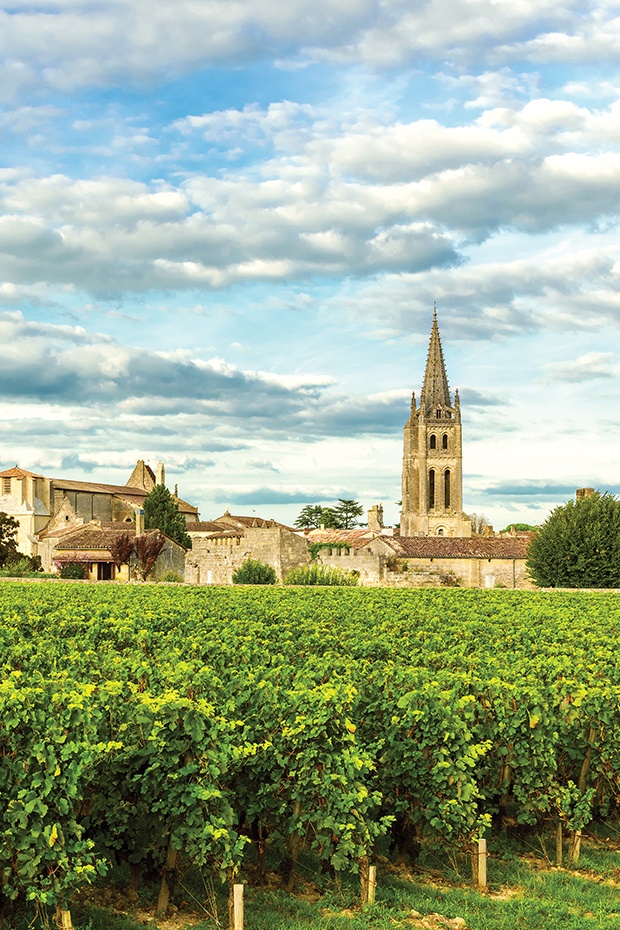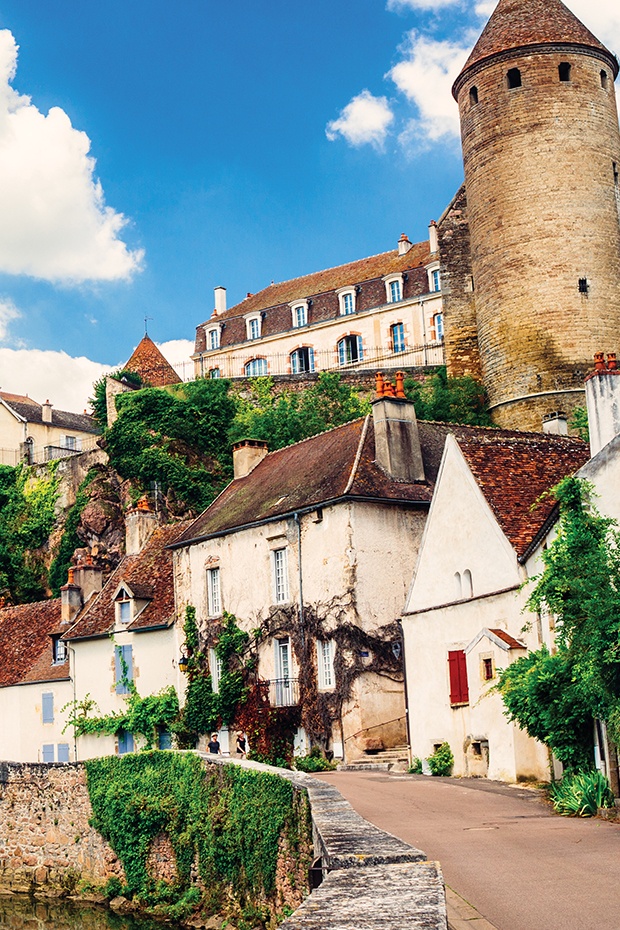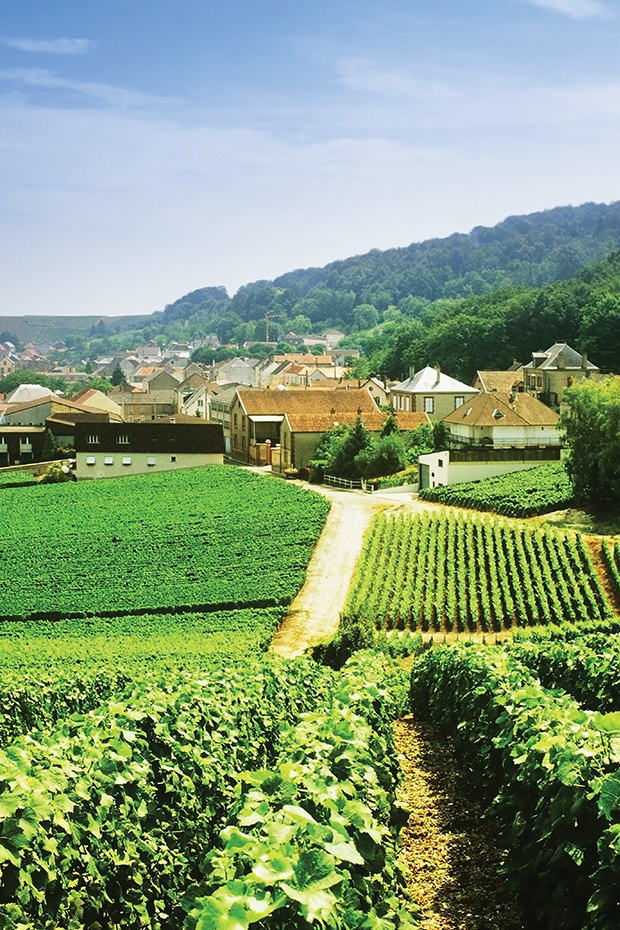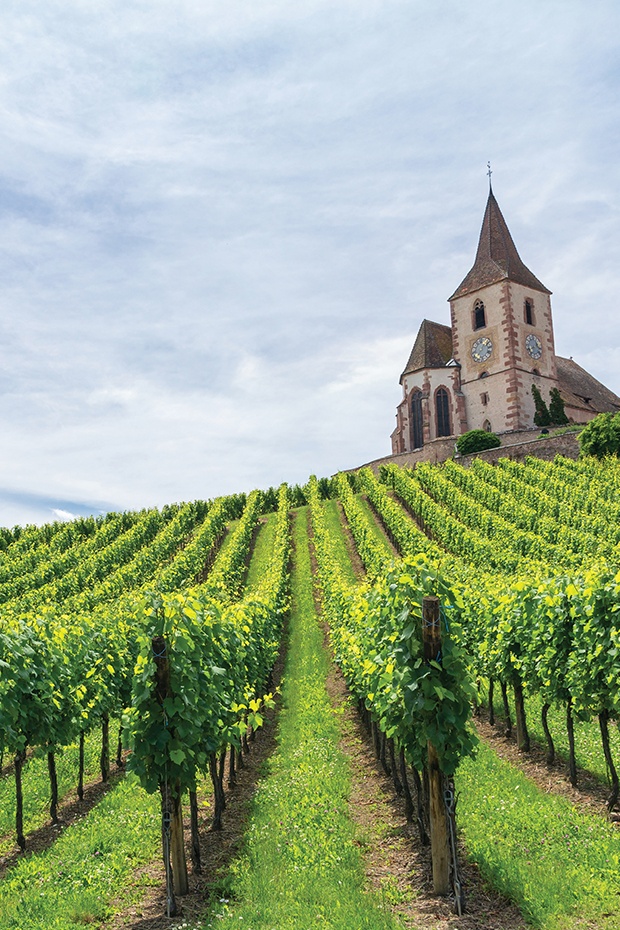
Wine has been a part of France’s history and culture for over 2,000 years. Making an average of over six-billion bottles of wine a year, France is the second-largest wine-producing country in the world, just steps behind Italy. The Bordeaux wine region, alone, produces about 700 million bottles a year.
The Beginner's Guide to French Wine
In France, and most of Europe, wine labels emphasize the terroir or region, the wine was made in, rather than its grape variety. French winemakers place a wine’s distinction in the hands of a number of things that influence the vine, from the type of soil it’s growing in, climate, weather, and winds, to the slope and elevation of the vineyard itself.
Also worth noting, in France, wines are made with several types of grapes as opposed to a single varietal which is more common in other countries around the world. This is what makes drinking Merlot from Bordeaux, Beaujolais from Burgundy, and Chardonnay from Champagne possible.
For the wine novice, you might need to re-read that last part a few times, but rest assured, it’s accurate. That said, the world of French wine can be intimidating, but once you know your way around the label, you’ll be able to confidently navigate your way through France (or the France aisle in your local wine shop.)
Here we break down the 5 best French wines by terroir:
Main wine-growing regions of France:
- Alsace
- Bordeaux
- Burgundy
- Beaujolais
- Champagne
- Côtes du Rhône
- Languedoc-Roussillon
- Loire Valley
- Provence
- Southwest
Bordeaux

White Wines: Sauvignon Blanc, Sémillon, Muscadelle
Red Wines: Cabernet Sauvignon, Merlot, Cabernet Franc, Petit Verdot, Malbec
Plan a Trip to Bordeaux
Bordeaux is France’s number one wine region, followed by Burgundy.
Bordeaux has over 306,000 acres of vineyards divided into two areas, the Left Bank and the Right Bank. The Left Bank produces some of the world’s best Cabernet Sauvignon wines showing black currants, and is home to wineries like Château Lafite Rothschild, Château Latour and Château Margaux, which have been producing for centuries.
They’re among the most collectible and most expensive in the world. Here, Cabernet Sauvignon makes up between 60-80% of the blend, with supporting notes from Merlot, Cabernet Franc, Petite Verdot and Malbec. The Right Bank is Merlot country which produces soft, rich wines showing dark cherry and plum. To the south, you’ll find delicious dessert wines.
Burgundy

White Wines: Chardonnay
Red Wines: Pinot Noir, Gamay
Plan a Trip to Burgundy
Burgundy’s 125,000 acres of vineyards cover a narrow strip of land on the eastern slopes of the hills in the capital, Dijon. Burgundy has five major wine-growing areas: Chablis, Côte d’Or, Côte Chalonnaise, Mâcon and Beaujolais, and branch out into even smaller distinct regions.
Red wine in Burgundy is mostly about medium-bodied pinot noir which shows cherry, cranberry, and raspberry, and the Beaujolais, made from the light and fruity Gamay grape which shows sweet candied strawberry and raspberry flavours.
Languedoc

White Wines: Chardonnay, Grenache Blanc, Marsanne, Roussanne
Red Wines: Grenache, Syrah, Carignane, Cinsaut
Plan a Trip to Languedoc
Languedoc is the largest producer of wine in terms of volume with 528,000 acres of vineyards. Thanks to the long hours of summer sun along the Mediterranean, grapes ripen well and quickly here which means wines are rich, fruity and full-bodied, and reminiscent of warm climate wines from California and Australia.
Red and rosé wines are generally a blend of carignan, cinsault, grenache, syrah, and mourvèdre.
Champagne

White Wines: Chardonnay
Red Wines: Pinot Noir, Pinot Meunier
Plan a Trip to Champagne
All Champagne is sparkling wine, but not all sparkling wine is Champagne. The most northern of France’s wine regions, Champagne has over 75,000 acres of vineyards and grows only three main grape varietals. These grapes don’t ripen fully every year in the cool, northern environment, and flavours lend itself to the chalky soil and continental growing conditions.
Champagne’s world-famous bubbly is a balance of the quality of the grapes and the skill of the blenders, the most well-known being Moët & Chandon, Taittinger, Mumm, Bollinger, and Heidsieck.
Alsace

White Wines: Riesling, Gewürztraminer, Pinot Gris, Pinot Blanc
Red Wines: Pinot Noir
Plan a Trip to Alsace
On the lower eastern slopes of the Vosges mountains in the Rhine Valley, near the German border of France is the wine-growing region of Alsace. With over 34,000 acres of vineyards, Alsace produces a delectable assortment of dry and fruity white wines, influenced by its hundreds of years of French and German cultural heritage.
Unlike most of the wine-growing regions in France, Alsace wines do have the grape varietal on the label - riesling, pinot gris, gewürztraminer, which are less fruity, and more intense and mineral.
Sip and savour a wine experience in France. Also, not to be missed, are the Loire Valley, Rhône Valley, Alsace and Provence, some of France’s best vineyards.


